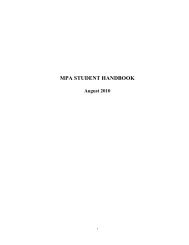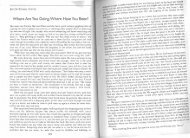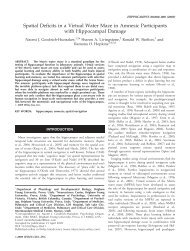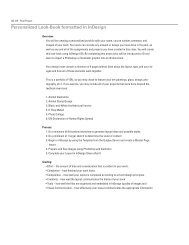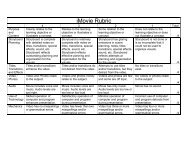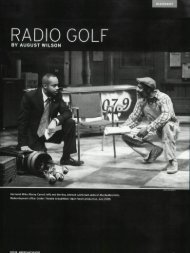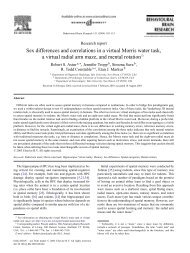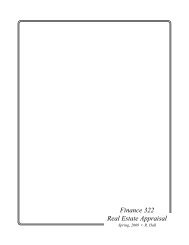Curriculum Vitae (pdf) - Southern Illinois University
Curriculum Vitae (pdf) - Southern Illinois University
Curriculum Vitae (pdf) - Southern Illinois University
You also want an ePaper? Increase the reach of your titles
YUMPU automatically turns print PDFs into web optimized ePapers that Google loves.
REFERENCES<br />
Alison Watts, Professor, Department of Economics, SIUC<br />
Mail Code 4515, 1000 Faner Drive, Carbondale, IL 62901<br />
Phone: 1-618-453-5072<br />
E-mail: wattsa@siu.edu<br />
Chifeng Dai, Associate Professor, Department of Economics, SIUC<br />
Mail Code 4515, 1000 Faner Drive, Carbondale, IL 62901<br />
Phone: 1-618-453-5347<br />
E-mail: daic@siu.edu<br />
Sajal Lahiri, Professor and Vandeveer Chair, Department of Economics, SIUC<br />
Mail Code 4515, 1000 Faner Drive, Carbondale, IL 62901<br />
Phone: 1-618-453-9472<br />
E-mail: lahiri@siu.edu<br />
Jason D. Tanner, Ph.D., Professor of Business, Department of Business Education<br />
John A. Logan College<br />
700 Logan College Road, Carterville, IL 62918<br />
Phone: 1-618-985-2828 Ext. 8170<br />
E-mail: jasontanner@jalc.edu<br />
DISSERTATION OUTLINE<br />
“Trade Networks under Asymmetric Information”, Job Market Paper<br />
Buyer and seller interactions are analyzed with intermediaries called traders using a network<br />
structure. Goods are traded in the market through those networks. Each seller and buyer is linked<br />
to a trader through a network but not directly linked to each other. Our main contribution to the<br />
literature is that we introduce asymmetric information on the valuation of goods by sellers and<br />
buyers. Our model basically consists of a two-stage game with incomplete information. First, the<br />
trader offers bid prices to the sellers and ask prices to the buyers. Second, trade takes place when<br />
the sellers and/or buyers accept the trader`s offers. The trader tries to maximize his profit.<br />
First, we analyze even network structures: one seller-one trader-one buyer and two buyers-one<br />
trader-two sellers. Our main finding for the one seller-one buyer network is that the trader never<br />
sets the same bid and ask prices to the seller and the buyer, respectively. Another result in the<br />
second setting is that the trader sometimes offers different prices to sellers or to buyers when the<br />
penalty is almost zero. For the asymmetric network case when one trader is linked to one seller<br />
and two buyers, we find that offering the same ask price to both buyers usually yields the<br />
maximum expected payoff to the trader. However, when the trader is linked to two sellers and<br />
one buyer, we see that that the trader sometimes offers the same price to all three parties to<br />
receive the maximum profit.<br />
“Multiple Traders’ Networks under Asymmetric Information”<br />
In this paper, we allow there to be multiple traders and analyze how buyer and seller prices are<br />
influenced by competition among traders in a model of uncertainty. We start by considering a<br />
network with one seller, two traders and one buyer. The seller and buyer have strong positions<br />
4



